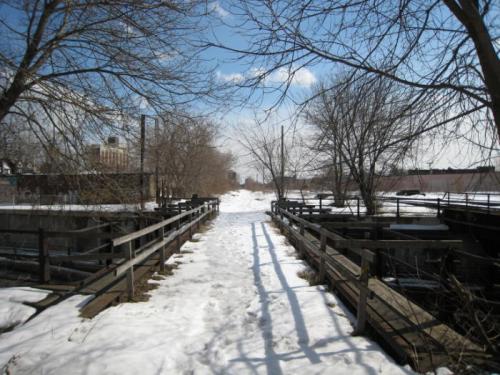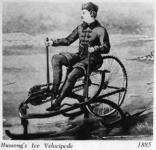
Perhaps one of the most exciting bits of cycling news happening in Toronto (at least for a west-ender like myself) this year is the opening of the first phase of the West Toronto Railpath. This first section of the Railpath will be from Cariboo St., at the West Toronto Diamond (just north of Dupont/Annette/Dundas), down to the Dundas/Sterling/Lansdowne area (map).
A significant portion of the work was completed in 2008, including grading, new fences, bridge upgrades, and new staircases at Bloor and Dupont Streets. Hopefully the paving and landscaping will be finished in time for a big launch party during Bike Week in the spring.
As exciting as the Phase One launch is, it's now time to start pushing for the completion of the south-eastern section of the Railpath which would end close to downtown at around Strachan Ave. and King St. W. It's a bit of a long and detailed story, but the short version is: The City does not yet own any part of the rail corridor south of Dundas St., and they are waiting to purchase it from CP who of course don't want to give it up until issues like the Airport Rail service and GO Transit expansion are sorted out.
Metrolinx and GO Transit are currently seeking feedback for the Georgetown South Service Expansion project, which includes the installation of several new sets of railway tracks throughout this corridor. To many peoples' dismay, the Metrolinx staff at these consultations seemed to be completely unaware of the existing Railpath construction and future plans to expand south-eastward, and have not properly considered leaving room for the Railpath.
Now, it's true that a rail corridor's primary purpose should be for the movement of trains, but if planned properly, this extremely wide piece of railway land should easily be able to accommodate a few metres of space along the edge for the Railpath. Approximately 4m is all the space required to squeeze the Railpath through.
The Metrolinx "Open House" meetings in Toronto have all finished, but there is still time to let them know that the Railpath is in high demand. You can leave comments in their Virtual Open House, email them at info@metrolinx.com, or call 1-866-658-9890.
It would also be a good idea to send your comments to your City Councillors and MPPs.
Due date for comments is Monday March 16th.
If you ever want to see the Railpath completed in its full glory, now is the time to contact Metrolinx, your councillors, and MPPs to make sure they reserve some space for cycling and walking in this corridor.


